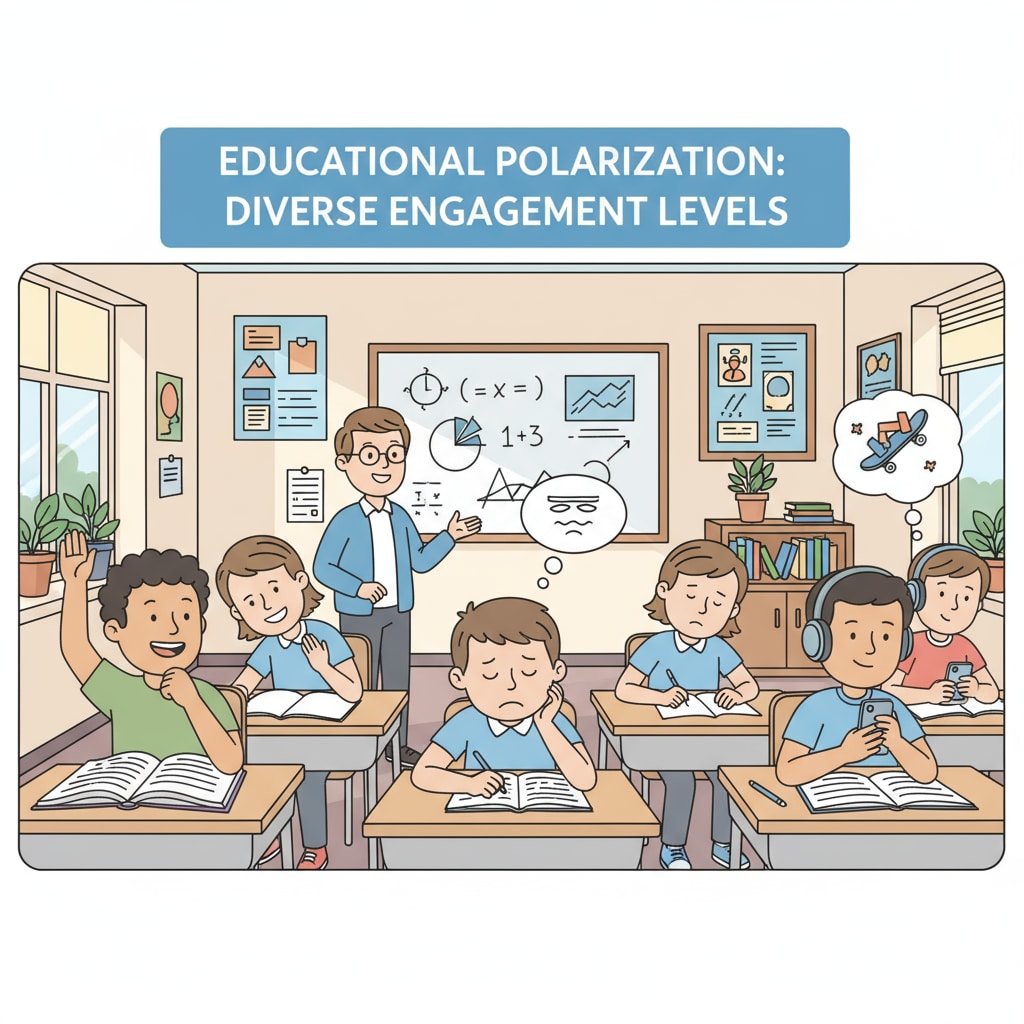In the realm of education, the issues of educational polarization, behavior management, and learning opportunities are intricately intertwined. The current educational system is facing a concerning phenomenon of severe polarization, which has left a significant group of students in a precarious situation. These are the students in the “middle ground”, those with moderate abilities but strong learning motivation, who are being marginalized, and their right to quality learning opportunities is being undermined.

The Polarized Educational Landscape
The educational system today is split into two extremes. On one hand, students in advanced courses are often burdened with excessive pressure. They are pushed to their limits, constantly striving to meet high academic standards. According to Britannica’s education resources, this overemphasis on high-level achievement can lead to stress and burnout among these students. On the other hand, regular courses have unfortunately become more of a venue for behavior problem management rather than a place focused on academic learning. This situation has created a gap where students in the middle are left adrift.
The Marginalization of “Middle Ground” Students
The “middle ground” students, with their moderate capabilities and eagerness to learn, are caught in the crossfire of this educational polarization. They don’t fit neatly into either extreme. In advanced courses, they may struggle to keep up with the intense pace, while in regular courses, they find the content too simplistic and unchallenging. As a result, they are not getting the targeted instruction they need.

This lack of appropriate educational attention not only affects their academic growth but also their motivation to learn.
These students often become invisible in the educational system. Teachers, preoccupied with managing extreme cases – either the high achievers or those with behavior problems – overlook the needs of these middle students. This oversight means that the learning opportunities tailored to their specific abilities and learning styles are scarce, hindering their potential development.
The Need for Educational Reform
To address this issue, educational reform is urgently needed. We must create a more inclusive and balanced learning environment. This could involve developing teaching methods that are more adaptable to the diverse needs of students, including those in the middle. Teachers should be trained to recognize and meet the unique requirements of these students. According to Wikipedia’s page on educational reform, successful educational reforms in the past have focused on individualized instruction and creating a supportive learning atmosphere.
Moreover, curriculum design should be more flexible. It should offer a range of challenges that can engage students at different levels, ensuring that middle students are neither bored nor overwhelmed. By doing so, we can provide these students with the learning opportunities they deserve and help them thrive in the educational system.
Readability guidance: This article has presented the problem of educational polarization and its impact on middle students in a clear and accessible way. Short paragraphs and simple language have been used to enhance readability. Transition words like “on one hand”, “on the other hand”, and “as a result” have been employed to make the flow of ideas smooth.


